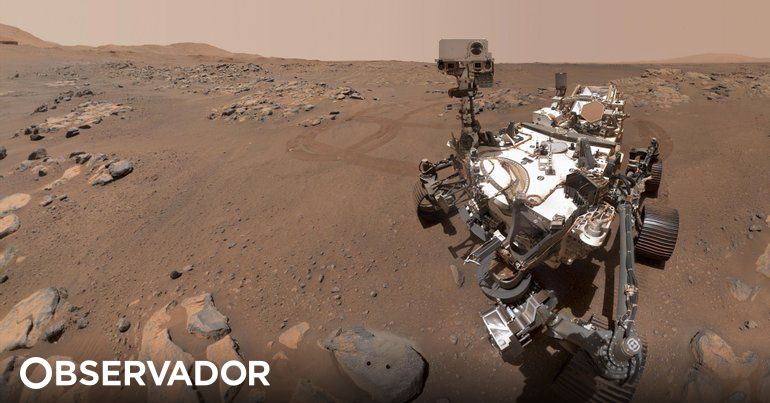NASA's Perseverance rover has found an “interesting” rock on the surface of Mars that may have hosted microbial life billions of years ago, according to data released Friday by the US space agency.
The rock was collected by the six-wheeled robot on July 21 in the northern Neretva Valice, which is believed to have been an ancient river valley about 400 metres wide millions of years ago.
The space agency explained that the first analyses conducted on the rover's instruments revealed that “the rocks have characteristics that meet the definition of a possible indicator of ancient life.”
“The rock shows chemical signatures and structures that could have formed billions of years ago, when the area explored by the rover had flowing water,” NASA's Jet Propulsion Laboratory said.
The US agency was quick to point out that further investigation is needed to determine whether these are indeed signs of microscopic life in this arrowhead-shaped veined rock, which measures about 1 x 0.6 metres.
NASA noted that the traces contained in the rock, which provide clues about possible microscopic life, may also have formed through “non-biological processes.”
However, the rock, nicknamed “Chiava Falls,” is “the most interesting, complex and potentially important rock that Perseverance has yet investigated,” explained Ken Farley, of the rover's science team.
Throughout the rock are large white veins of calcium sulfate, among which is a reddish substance that suggests hematite, one of the minerals that gives Mars its distinctive rusty color.
The space agency explained that the spacecraft took a close look at these red areas and found “dozens of white spots, millimeter-sized and irregular in shape, each surrounded by black material resembling tiger spots.”
Subsequent analyses using Perseverance's instruments yielded evidence that these “dark circles” contained iron and phosphate, which surprised scientists.
“On Earth, these types of features in rocks are often associated with the fossil record of microbes living underground,” said David Flannery, an astrobiologist and member of the Perseverance science team.
Farley noted that there are still many doubts about the properties of the rock, which they studied in reverse using the rover's already-expired tools.
For a more complete study, it is necessary to bring it to Earth, which will also allow us to fully understand what happened in the Jezero Crater, where Perseverance is located and where it is estimated that water existed millions of years ago.
NASA is in the midst of a campaign to send a mission to return the samples collected by Perseverance.
The latest plan he has designed includes up to $11 billion (€10.1 billion at the current exchange rate), which represents a challenge to the budget.

“Coffee trailblazer. Social media ninja. Unapologetic web guru. Friendly music fan. Alcohol fanatic.”

